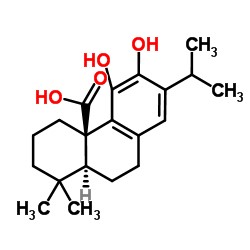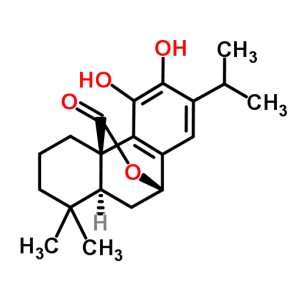In collaboration with the company Naturex and the Frédéric-Joliot Institute, scientists from CEA-BIAM have studied the mode of functioning of carnosic acid and its major oxidized derivative, carnosol. These two known antioxidants can represent up to 10% of the dry weight of rosemary leaves.
These two molecules are polyphenolic terpenes specific to the Lamiaceae family (including rosemary, salvia, thyme, and basil) whose antioxidant properties have been mostly identified through in vitro analyses. Carnosic Acid is widely used in the food and beverage industry, medicine, health and cosmetics, and in the form of natural extracts of rosemary as a substitute for synthetic antioxidants. Yet there is very limited knowledge on the mechanism of action of carnosic acid and its role in planta.
These in vitro and in vivo studies have shown that carnosic acid and carnosol protect lipids, in solution or in biological membranes, against oxidation by reactive oxygen species through different mechanisms. Carnosic acid acts as a chemical scavenger for toxic oxygen species such as singlet oxygen and hydroxyl radicals. During this process, it is converted into various oxidized derivatives, including carnosol. The latter has a very high resistance to oxidative stress, is incapable of trapping toxic oxygen species and acts directly on lipids by blocking the chain reactions of lipid peroxidation.
The comparison between different varieties of rosemary showed a strong correlation between their concentration in carnosic acid and in carnosol. and the resistance of these plants to oxidative stress. The presence of many oxidized derivatives of carnosic acid were also discovered in the plant leaves. Carnosic acid and its oxidation derivatives thus decline an original and particularly effective antioxidant 'cascade' mechanism that allows rosemary to cope with the unfavorable and stressful conditions of its natural Mediterranean habitat.
This knowledge will lead to optimizations in rosemary extract preparation to make it more efficient for health and cosmetic applications.


Acide carnosique Carnosol